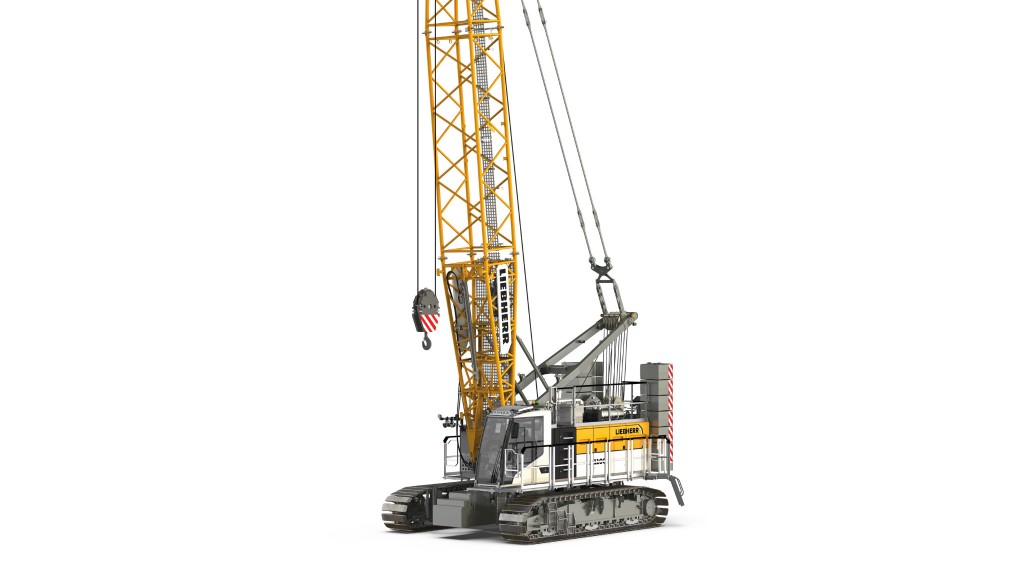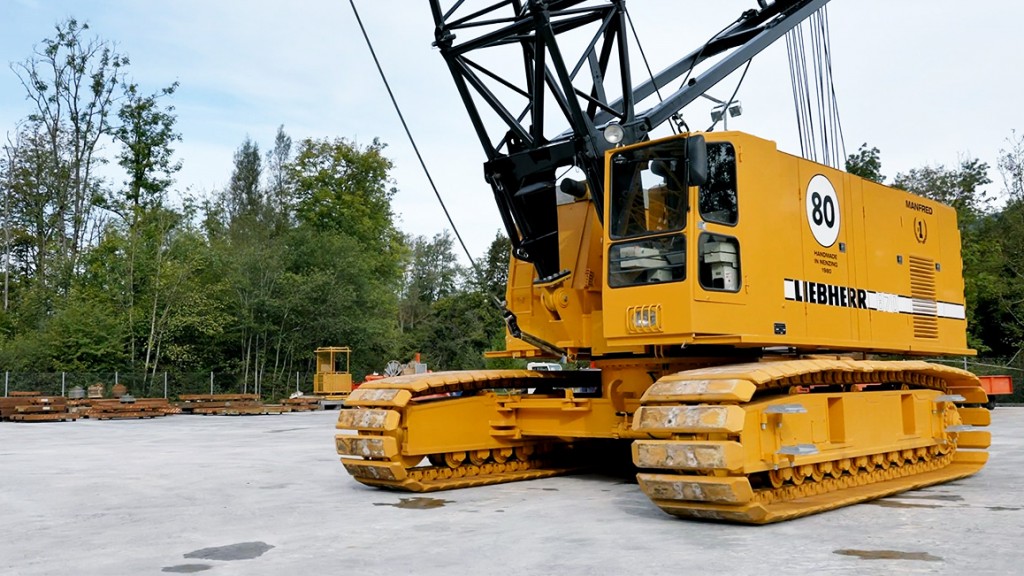
Liebherr's new crawler crane, the LR 1100.1, was built for all typical lifting applications in the 100-tonne category. It can be configured either with a main boom up to 62 m, or with a main boom up to 44 m in combination with a fixed jib up to 20 m.
The LR 1100.1 is fitted with a 230 kW engine to provide the necessary performance for the lifting operations. Due to an Eco-Silent mode, the engine speed can be reduced to a predefined level. This means that diesel consumption and noise emission are reduced while performance remains the same. The automatic engine stop control offers a further economic and environmentally friendly solution. After checking certain system functions, the engine is switched off during longer work interruptions.
Operating the LR 1100.1 outside the cabin
The crawler crane was built for quick transfer between construction sites. The transport width is 2,983 mm or 3,500 mm, depending on whether the crane is transported with or without crawlers. At the construction site, the assembly of the LR 1100.1 is simplified through the self-assembly system and radio remote control.
Radio remote control allows the crane operator flexibility and safety even during operation. The crane can be operated from outside the cabin and so allow for a better overview of the construction site and blind spots can thus be better avoided. Depending on the application, a second person is no longer required to assist with hand signals during lifting operations. The cabin of the new crawler crane can be elevated by 2.8 m thus allowing for a good all-around view.
Liebherr's Gradient Travel Aid increases operator safety
For the safe negotiation of slopes and inclines, the new crane is fitted with Gradient Travel Aid. The control system automatically calculates the centre of gravity and warns the operator before the crane leaves the safe area. While travelling, the operator receives information about the permissible and actual gradient and the crane's overall centre of gravity at all times. If necessary, the boom angle can be altered so that the machine remains in the safe area.
Company info
1015 Sutton Drive
Burlington, ON
CA, L7L 5Z8
Website:
liebherr.com/en/can/about-liebherr/liebherr-worldwide/canada/liebherr-in-canada.html



